This website uses cookies so that we can provide you with the best user experience possible. Cookie information is stored in your browser and performs functions such as recognising you when you return to our website and helping our team to understand which sections of the website you find most interesting and useful.
Home Care In Charleston, SC

They say that your golden years are the best years of your life. For most older Americans, that's how it should be - a time to relax, reflect, and live life in a familiar place. After all, senior citizens in the U.S. have worked tirelessly to build a better economy, serve their communities, and raise families.
However, as seniors grow older, completing daily tasks like showering and enjoying activities such as visiting the historic Charles Towne Landing State Historic Site gets harder without someone by their side. Unfortunately, many older Americans aren't able to rely on their adult children for help. The reality in today's world is that family members do not have the skills or time to dedicate to caring for their parents. That's where Always Best Care Senior Services comes in.
Our in-home care services are for people who prefer to stay at home as they grow older but need ongoing care that family or friends cannot provide. More and more older adults prefer to live far away from long-term, institutionalized facilities and closer to the place where they feel most comfortable - their home. Home care in Charleston, SC is a safe, effective way to give your loved ones the care they need when they need it the most.

 Home Care Services
Home Care Services
- Home Care in Charleston, SC
- The Always Best Care Difference
- Types of In-home Care in Charleston, SC
- Benefits of Home Care in Charleston, SC
- Aging in Place: The Preferred Choice for Most Seniors
- Affordable Care Plans
- Compassionate Care. Trusted Caregivers
- Assisted Living Referral Services
- Taking the First Step with Always Best Care
 Service Areas
Service Areas
The Always Best Care Difference
Since 1996, Always Best Care has provided non-medical in-home care for seniors to help them maintain a healthy lifestyle as they get older. We are proud to have helped more than 25,000 seniors maintain higher levels of dignity and respect. We focus on providing seniors with the highest level of in-home care available so that they may live happily and independently.
Unlike some senior care companies, we genuinely want to be included in our clients' lives. We believe that personalized care is always the better option over a "one size fits all" approach. To make sure our senior clients receive the best care possible, we pair them with compassionate caregivers who understand their unique needs. That way, they may provide care accordingly without compromising their wellbeing.
The Always Best Care difference lies in life's little moments - where compassionate care and trustworthy experience come together to help seniors live a fruitful, healthy life. Whether you are an aging adult that can't quite keep up with life's daily tasks or the child of a senior who needs regular in-home services, Always Best Care is here to help.
“Best Senior Service Care in Charleston to work for. Christine and Rick are very positive”
“Very Professional and excellent staff.”
“Our family has been using the services of Always Best Care for the past six”
“I cannot say enough wonderful things about Always Best Care Charleston! I am truly blessed”
“Always Best Care caregivers have been taking care of Dad for over a year. We”
“Like most I was not prepared for the transition to being the responsible one for”
“We have had several senior services for my Mother that we were really not happy”
“Good Afternoon! I hope you're doing well! I wanted you to know that my dad”
“The absolute best caregiving company to work for hands down! Rick and Christine are genuine,”
“This is a great company to work for. All their caregivers are dedicated and caring.”
“These people are lifesavers! We searched for months to find an in-home care agency for”
“Always Best Care has constantly provided quality care services for my wife over many months”
“Couldn’t imagine a better team of people to take care of my loved ones. Rick”
“Rick and Christine, of Always Best Care Charleston, are the exact people I would trust”
“I've known Christine and Ricky Johnson for more than 30 years and would highly recommend”
“I joined Always Best Care as the Director of Operations about 3 months ago. I”
“I have known Christine and Rick for years. Their actions and words repeatedly demonstrate their”
“I couldn't be happier that Ricky and Christine Johnson have joined Always Best Care Senior”
“How fortunate the Charleston community is to have Always Best Care to serve the needs”
“I have known Christine and Rick Johnson both professionally and personally for over 20 years”
“Best Senior Service Care in Charleston to work for. Christine and Rick are very positive and supportive and for that I love my Job.”
“Very Professional and excellent staff.”
“Our family has been using the services of Always Best Care for the past six months and are grateful for the assistance provided to my elderly parents. Initially Rick, one of the owners, met with us along with my parents to closely assess their needs. His warm, friendly manner was helpful in persuading my father to give the assistance a try for two days per week. Rick listened carefully to choose the best match in caregivers, and we could not be more satisfied than we are with our parents' caregiver. She has quickly become essential in their lives and makes a huge difference in whether or not they can remain in their home. Her manner with my parents is professional, but loving, always--- always--- going the extra mile to meet their needs. She is knowledgeable, hard-working, caring, and trusted to do what is in their best interest. We are thankful that someone told us about Always Best Care and ever grateful for our caregiver.”
“I cannot say enough wonderful things about Always Best Care Charleston! I am truly blessed to be a part of such a wonderful team! Christine and Rick are very dedicated to the work that they are doing, and it shows in everything they do. I have never had the pleasure of working for a company with more passionate and involved owners. They show up for their clients and caregivers in every way possible. They go above and beyond to treat everyone like family and enrich the lives of those around them. I am so grateful to be able to be a part of this journey and cannot wait to see all the great things they will accomplish!”
“Always Best Care caregivers have been taking care of Dad for over a year. We appreciate Christine and Rick very much. Quentin, Ann, Alexus , you and others have been a joy to have in our home and doing whatever needs to be done. You show your care and concern for Dad’s physical and emotional well being and you have become part of our family. I really rely on you when we can’t be home and know Dad is in good hands!!! Keep up the good work!!! Love you all.”
“Like most I was not prepared for the transition to being the responsible one for my Mom. Looking back there were signs of memory decline but after emergency surgery and move to rehab the combative paranoid person my sweet, witty, well read , soft spoken Mom became was shocking. Medication and skilled care were prescribed. Several missteps were made with both. Mom’s dark side resulted in first skilled care company dropping us which I totally understood. I was very straight with Christine and Rick regarding Mom’s recent ‘trips out on the ledge’. Rather than politely taking a pass on us...they spent 2 hours in person with us, 3 cumulative hours on the phone asking me questions and strategizing how to avoid the triggers that put Mom ‘on the ledge’, and 2 twelve hour days observing, testing and tweaking strategies. We are approaching 2 months with no major or reportable incidents. I don’t know how long this again found quality of life will last. I am thankful that one of the nurses referred me to ABC. I am tremendously thankful to be their client for the remainder of this journey.”
“We have had several senior services for my Mother that we were really not happy with, then we found Rick and his staff with Always Best Care. There name says it all ... always the best care. Their staff are warm, caring and assist my Mother seven days a week, and she loves seeing Rick. I couldn't ask for better care & highly recommend them to anyone who needs this type of service.”
“Good Afternoon! I hope you're doing well! I wanted you to know that my dad LOVES Rick and so does Amya!! I can't thank you guys enough for all that you guys are doing, not only for my father but me! Rick went out of his way today and that truly meant a lot :) My dad is so happy and that makes me happy! you guys rock!! thank you!!!”
“The absolute best caregiving company to work for hands down! Rick and Christine are genuine, loving individuals which make them amazing business owners/ bosses. They do not hesitate to make their employees and clients happy. I’m so thankful to have met these amazing people and be apart of their outstanding company.”
“This is a great company to work for. All their caregivers are dedicated and caring.”
“These people are lifesavers! We searched for months to find an in-home care agency for my aging mother. Previous agencies we used had high turnover and repeated no-shows, leaving us scrambling to adjust and worried sick about Covid exposure from a revolving door of caregivers. Christine and her staff came to our rescue and changed all that. Their caregivers were patient, loving, dedicated and RELIABLE. They provide service at the highest level and we would wholeheartedly recommend them to others. My mother deserves the best care and I wouldn't use anyone else.”
“Always Best Care has constantly provided quality care services for my wife over many months of required assistance. The caregivers provide professional services with a loving touch. They have always addressed any questions or concerns immediately with kindness. The administration checks with me, periodically, for a review and any input for improvement. I highly recommend this company.”
“Couldn’t imagine a better team of people to take care of my loved ones. Rick and Christine are the kindest and most genuine people. Their years of work in the customer service industry truly show through the care they provide to others. Aside from the physical and emotional care they provide, which is most important, they are reliable, punctual, trustworthy, and their connections with others last a lifetime. Everyone is family with Rick and Christine.”
“Rick and Christine, of Always Best Care Charleston, are the exact people I would trust and choose to care for my aging loved ones. They are loving, patient, knowledgeable and extremely detail oriented. They have decades of experience in the customer service industry and truly value the relationships with each of their clients.”
“I've known Christine and Ricky Johnson for more than 30 years and would highly recommend their services! They've built businesses from the ground up and this one is / will be a perfect fit for them and their clients. They come from, and have created, a large family where assisting others is part of their everyday lives. Their caring nature, solid work ethic and integrity will be highlighted through Always Best Care Senior Services Charleston and will be to the benefit of clients' loved ones.”
“I joined Always Best Care as the Director of Operations about 3 months ago. I bring 15 years experience in senior living to this brand new non medical home care company. We have put together an excellent team of personal assistant’s and are ready to accept new clients.”
“I have known Christine and Rick for years. Their actions and words repeatedly demonstrate their high expectation of what it takes to nurture a loving family and to be active members of a positive, supportive community. Both clients and employees will benefit from their consistent standard of compassionate honesty & integrity as well as the positive energy they bring to every encounter. I recommend them without reservation.”
“I couldn't be happier that Ricky and Christine Johnson have joined Always Best Care Senior Services. From years of experience in dedicated customer service to the love and care of their own (and extended) family, this is a wonderful fit! The Johnson's tireless work ethic, attention to detail and heart for people should give family members of clients absolute confidence and trust in their care. Bravo!”
“How fortunate the Charleston community is to have Always Best Care to serve the needs of seniors. Rick and Christine Johnson, known for their dedication to helping others, have prayerfully commited to finding and nurturing the best team possible to assist them on this mission. Thank you, Rick and Christine, for offering families peace of mind for the care of loved ones.”
“I have known Christine and Rick Johnson both professionally and personally for over 20 years now. I know them to be caring and loving. I with no reservations would have them care for my 93 year old father, If I still lived in the Charleston area. I can not state a higher praise to their character and integrity than that. Allen Sandridge”
What is Non-Medical Senior Care in Charleston, SC?

Home is where the heart is. While that saying can sound a tad cliche, it is especially true for many seniors living in America. When given a choice, older adults most often prefer to grow older at home. An AARP study found that three out of four adults over the age of 50 want to stay in their homes and communities as they age.

When you begin to think about why, it makes sense. Home offers a sense of security, comfort, and familiarity.

The truth is, as we age, we begin to rely on others for help. When a family is too busy or lives too far away to fulfill this role, in-home senior care is often the best solution. Home care services allow seniors to enjoy personal independence while also receiving trustworthy assistance from a trained caregiver.

At Always Best Care, we offer a comprehensive range of home care services to help seniors stay healthy while they get the help they need to remain independent. As your senior loved one gets older, giving them the gift of senior care is one of the best ways to show your love, even if you live far away.

Types of Elderly Care in Charleston, SC
To give our senior clients the best care possible, we offer a full spectrum of in-home care services:

Personal Care Services
If your senior loved one has specific care needs, our personal care services are a great choice to consider. Personal care includes the standard caregiving duties associated with companion care and includes help with tasks such as dressing and grooming. Personal care can also help individuals with chronic conditions like diabetes.
Common personal care services include assistance with:
- Eating
- Mobility Issues
- Incontinence
- Bathing
- Dressing
- Grooming


Home Helper Services
Sometimes, seniors need helpful reminders to maintain a high quality of life at home. If you or your senior has trouble with everyday tasks like cooking, our home helper services will be very beneficial.
Common home helper care services include assistance with:
- Medication Reminders
- Meal Preparation
- Pet Care
- Prescription Refills
- Morning Wake-Up
- Walking
- Reading


Companionship Services
Using this kind of care is a fantastic way to make life easier for you or your senior loved one. At Always Best Care, our talented caregivers often fill the role of a companion for seniors. That way, older adults can enjoy their favorite local activities, such as visiting Hampton Park with friends while also receiving the care they need daily or weekly.
Common companionship services include:
- Grocery Shopping
- Transportation to Appointments
- Nutritional Assistance
- Conversation
- Planning Outings
- Completing Errands
- Transportation to Community
- Events and Social Outings


Respite Care Services
According to AARP, more than 53 million adults living in the U.S. provide care to someone over 50 years old. Unfortunately, these caregivers experience stress, exhaustion, and even depression. Our respite care services help family caregivers address urgent obligations, spend time with their children, and enjoy nearby activities. Perhaps more importantly, respite care gives family members time to recharge and regroup. Taking personal time to de-stress reduces the risk of caregiver burnout. So, if you've always wanted to eat at the local Magnolias or visit Middleton Place, don't feel bad. Doing so is great for both you and your loved one.
At the end of the day, our goal is to become a valuable part of your senior's daily routine. That way, we may help give them the highest quality of life possible. We know that staying at home is important for your loved one, and we are here to help make sure that is possible.
If you have been on the fence about non-medical home care, there has never been a better time than now to give your senior the care, assistance, and companionship they deserve.

Benefits of Home Care in Charleston, SC
Always Best Care in-home services are for older adults who prefer to stay at home but need ongoing care that friends and family cannot provide. In-home care is a safe, effective way for seniors to age gracefully in a familiar place and live independent, non-institutionalized lives. The benefits of non-medical home care are numerous. Here are just a few reasons to consider senior care services from Always Best Care:
Always Best Care offers a full array of care options for patients at all levels of health. With our trusted elderly care services, your loved one will receive the level of care necessary for them to enjoy the highest possible quality of life.
Request More Information
Aging in Place: The Preferred Choice for Most Seniors
While it's true that some seniors have complicated medical needs that prevent them from staying at home, aging in place is often the best arrangement for seniors and their families. With a trusted caregiver, seniors have the opportunity to live with a sense of dignity and do so as they see fit - something that is unavailable to many older people today.
In-home care makes it possible for millions of seniors to age in place every year. Rather than moving to a strange nursing home, seniors have the chance to stay at home where they feel the happiest and most comfortable.
Here are just a few of the reasons why older men and women prefer to age at home:
How much does a senior's home truly mean to them?
A study published by the American Society on Aging found that more than half of seniors say their home's emotional value means more than how much their home is worth in monetary value. It stands to reason, then, that a senior's home is where they want to grow old.
With the help of elderly care in Charleston, SC, seniors don't have to age in a sterilized care facility. Instead, they can age gracefully in the place they want to be most: their home. In contrast, seniors who move to a long-term care facility must adapt to new environments, new people, and new systems that the facility implements. At this stage in life, this kind of drastic change can be more harmful than helpful.
Institutional care facilities like nursing homes often put large groups of people together to live in one location. On any given day, dozens of staff members and caregivers run in and out of these facilities. Being around so many new people in a relatively small living environment can be dangerous for a seniors' health and wellbeing. When you consider that thousands of seniors passed away in nursing homes during the COVID-19 pandemic, opting for in-home care is often a safer, healthier choice for seniors.
Aging in place has been shown to improve seniors' quality of life, which helps boost physical health and also helps insulate them from viral and bacterial risks found in elderly living facilities.
For many seniors, the ability to live independently with assistance from a caregiver is a priceless option. With in-home care, seniors experience a higher level of independence and freedom - much more so than in other settings like a nursing home. When a senior has the chance to age in place, they get to live life on their own terms, inside the house that they helped make into a home. More independence means more control over their personal lives, too, which leads to increased levels of fulfillment, happiness, and personal gratification. Over time, these positive feelings can manifest into a healthier, longer life.
More independence, a healthier life, and increased comfort are only a few benefits of aging in place. You have to take into consideration the role of cost and convenience. Simply put, it's usually easier and more affordable to help seniors age in place than it is to move them into an institutional care facility. According to the US Department of Housing and Urban Development, seniors who age in the comfort of their homes can save thousands of dollars per month.
In-home care services from Always Best Care, for instance, are often less expensive than long-term solutions, which can cost upwards of six figures per year. To make matters worse, many residential care facilities are reluctant to accept long-term care insurance and other types of payment assistance.
With Always Best Care's home care services, seniors and their families have a greater level of control over their care plans. In-home care gives seniors the chance to form a bond with a trusted caregiver and also receive unmatched care that is catered to their needs. In long-term care facilities, seniors and their loved ones have much less control over their care plan and have less of a say in who provides their care.

Affordable Care
In-home care is a valuable resource that empowers seniors to age in place on their own terms. However, a big concern for many families and their loved ones is how much in-home care costs. If you're worried that in-home care is too expensive, you may be pleasantly surprised to learn that it is one of the most affordable senior care arrangements available.
Typically, hiring an Always Best Care in-home caregiver for a few hours a week is more affordable than sending your loved one to a long-term care facility. This is true even for seniors with more complex care needs.
At Always Best Care, we will work closely with you and your family to develop a Care Plan that not only meets your care needs, but your budget requirements, too. Once we discover the level of care that you or your senior need, we develop an in-home care plan that you can afford.
In addition to our flexible care options, families should also consider the following resources to help offset potential home care costs:

Compassionate Care. Trusted Caregivers.
When you or your senior loved one needs assistance managing daily tasks at home, finding a qualified caregiver can be challenging. It takes a special kind of person to provide reliable care for your senior loved one. However, a caregiver's role involves more than meal preparation and medication reminders. Many seniors rely on their caregivers for companionship, too.
Our companion care services give seniors the chance to socialize in a safe environment and engage in activities at home. These important efforts boost morale and provide much-needed relief from repetitive daily routines. A one-on-one, engaging conversation can sharpen seniors' minds and give them something in which to be excited.
At Always Best Care, we only hire care providers that we would trust to care for our own loved ones. Our senior caregivers in Charleston, SC understand how important it is to listen and communicate with their seniors. A seemingly small interaction, like a short hug goodbye, can make a major difference in a senior's day. Instead of battling against feelings of isolation, seniors begin to look forward to seeing their caregiver each week.
Understanding the nuances of senior care is just one of the reasons why our care providers are so great at their job.
Unlike some senior care companies, our caregivers must undergo extensive training before they work for Always Best Care. In addition, our caregivers receive ongoing training throughout the year. This training ensures that their standard of care matches up to the high standards we've come to expect. During this training, they will brush up on their communication skills, safety awareness, and symptom spotting. That way, your loved one receives the highest level of non-medical home care from day one.
Assisted Living Referral Services
While it's true that many seniors prefer to age at home, sometimes in-home care isn't the best fit. For those seniors and their families, choosing an assisted living facility makes more sense. Unfortunately, finding the optimal care facility is easier said than done in today's day and age. That's when Always Best Care's assisted living referral services begin to make a lot of sense.
Assisted living is a form of housing intended for seniors who require varying degrees of medical and personal attention. Accommodations may include single rooms, apartments, or shared living arrangements. Assisted living communities are typically designed to resemble a home-like environment and are physically constructed to encourage the independence of residents.

At assisted living communities, seniors receive help with daily activities such as bathing, dressing, and eating. They may also benefit from coordination of services with outside healthcare providers, and monitoring of resident activities to ensure their health, safety, and well-being. Caregivers who work at assisted living communities can also provide medication administration and personal care services for older adults.
Other services offered within assisted living communities can include some or all of the following:
- Housekeeping
- Laundry
- Recreational Activities
- Social Outings
- Emergency Medical Response
- Medication Monitoring
- Family Visitation
- Personal Care

At Always Best Care, our representatives can match your senior's emotional, physical, and financial needs with viable assisted living communities nearby. Results are based on comparative data, so you can select the best choice for you or your loved one.
Always Best Care works closely with local senior living communities to gain valuable knowledge that we then use to help seniors and their loved ones make informed decisions. This information can include basic care and rent, resident availability, and services provided. Because Always Best Care is compensated by these communities, we provide senior living referral services at no extra cost to you.
Some of the most popular assisted living communities to consider in our area include the following:
- Indigo Hall Assisted Living and Memory Care
- Ashley Gardens Assisted Living Memory Care
- The Bridge at Charleston
- Oaks at Charleston
- Wellmore of Daniel Island
- Kempton of Charleston

For many seniors, moving into a senior living community revolves around how and when they want to make a transition to more involved care. Some seniors are more proactive about transitioning to independent living. Others choose to remain home until their care needs or other requirements are satisfied. Remember - our staff is here to help. Contact our office today to learn more about assisted living communities and how we can find a facility that exceeds your expectations.

Taking the First Step with Always Best Care
The first step in getting quality in-home care starts with a personal consultation with an experienced Always Best Care Care Coordinator. This initial consultation is crucial for our team to learn more about you or your elderly loved one to discover the level of care required. Topics of this consultation typically include:
A discussion of your needs and how our trained caregivers can offer assistance in the most effective way

A draft of your care plan, which includes highly detailed notes and a framework for the care that you or your senior will receive

Discuss payment options and help coordinate billing with your insurance provider

Our caregivers are trained to spot changes that clients exhibit, like mental and physical decline. As your trusted senior care company, we will constantly assess and update your Care Plan to meet any new emotional, intellectual, physical, and emotional needs.
If you have never considered in-home care before, we understand that you and your family may have concerns about your Care Plan and its Care Coordinator. To help give you peace of mind, know that every team member and caregiver must undergo comprehensive training before being assigned to a Care Plan.
At the end of the day, we only hire the best of the best at Always Best Care. Whether you need home care in Charleston, SC 24-hours a day or only need a respite for a couple of hours, we are here to serve you.
When you're ready, we encourage you to contact your local Always Best Care representative to set up a Care Consultation. Our Care Coordinators would be happy to meet with you in person to get to know you better, discuss your needs, and help put together a personalized Care Plan specific to your needs.

Latest News in Charleston, SC
Shrimpers name Charleston restaurants accused of falsely advertising local shrimp, but get pushback
Parker Milnerhttps://www.postandcourier.com/charleston_sc/charleston-sc-restaurants-shrimp-fraud-lawsuit/article_89f866ef-48bb-4410-ad48-d22e50ccc25b.html
MOUNT PLEASANT — Boats sat idle in Shem Creek around noon July 2, as diners sauntered into restaurants along the crowded strip to peruse menus featuring all kinds of seafood, from crab to flounder to grouper.Shrimp, a hotly debated topic in recent weeks, is offered fried, boiled, blackened or piled onto grits at many of the establishments ...
MOUNT PLEASANT — Boats sat idle in Shem Creek around noon July 2, as diners sauntered into restaurants along the crowded strip to peruse menus featuring all kinds of seafood, from crab to flounder to grouper.
Shrimp, a hotly debated topic in recent weeks, is offered fried, boiled, blackened or piled onto grits at many of the establishments in this popular tourist section of the Charleston area.
Just beyond Shem Creek's restaurant row, manager Sarah Fitch assisted customers outside Mt. Pleasant Seafood, a family-owned retailer founded in 1945. The market currently sells three types of shrimp.
One is locally sourced. Two are imported.
Mt. Pleasant Seafood's signage does not denote its shrimp as local or imported, but the staff is transparent with customers about where it's coming from, Fitch told The Post and Courier within earshot of patrons waiting in line.
But not every local business is being open about its sourcing methods, members of the shrimping industry allege.
About six miles away at another popular tourist area in downtown Charleston, the S.C. Shrimpers Association and its lawyer announced they had added the names of 25 Charleston area restaurants to an existing lawsuit that accused 40 establishments of selling imported shrimp while advertising them as being local or wild caught.
The 25 restaurants cited by name extend from Shem Creek in Mount Pleasant to downtown Charleston, up to North Charleston and Summerville, across West Ashley and out to Folly Beach. Some are widely known, with others less so.
Addressing reporters in front of the Pineapple Fountain at Waterfront Park, Bryan Jones and Rocky Magwood of the S.C Shrimpers Association and the organization's attorney, Gedney Howe IV, criticized the practice of passing off imported shrimp as local.
"It's obviously the shrimpers, like myself, Rocky, and the entire fleet throughout South Carolina, that are affected when they're undercut by restaurants not buying our shrimp and then purchasing imported shrimp and selling it as local," Jones said.
Those claims met pushback from members of the seafood industry, including some of the restaurants that have been singled out — with many denying they have done anything to directly mislead customers.
The cost of imported shrimp is significantly cheaper, said the managers at Red's Ice House, Tavern & Table and Sunsets Waterfront Dining, all located along Shem Creek. At other establishments, including Mt. Pleasant Seafood, owners said cost coupled with a lack of local availability create a need for imported shrimp.
The release of restaurant names came weeks after 40 out of 44 restaurants tested in the Charleston area were alleged to be misleading customers with the sale of imported shrimp. In announcing the initial results in June, SeaD Consulting of Texas publicly identified the four restaurants found to be selling local or wild-caught shrimp, and accurately advertised as such. Left out were the names of the 40 other establishments.
SeaD's testing was commissioned by the Southern Shrimp Alliance, an industry trade association based in Tarpon Spring, Fla. SeaD officials declined a Post and Courier interview request.
The names of the remaining 15 businesses aren't expected to be released in the immediate future.
Owners spotlighted by the research firm largely refuted the claims that they mislead customers. Questions remain about how SeaD Consulting carried out its testing, as well as what criteria were used in determining which restaurants to test and how conclusions were drawn.
Ongoing litigation
Testing results culminated with the Shrimpers Association filing a federal lawsuit on June 13 against all 40 restaurants initially accused of selling imported shrimp. An updated complaint was filed July 2 to name 25 businesses, but not the remaining ones.
It's unclear what the association, as well as SeaD Consulting, consider to be fraudulent. Howe said the Southern Shrimp Alliance, the group that funded the study, provided the restaurant list to the S.C. Shrimper’s Alliance.
SeaD officials would not address how the 44 places were selected to be tested, nor what the company considers to be fraudulent. SeaD's testing took place in late May, about a week before the commercial trawling season opened.
The lawsuit accuses the restaurants of false advertising and violating South Carolina's Unfair Trade Practices Act and the Lanham Act, a federal law that prohibits false advertising. According to the lawsuit, restaurant defendants "falsely advertised shrimp served in their establishments as 'local,' 'Carolina-caught' (and) 'fresh South Carolina shrimp,' among other misrepresentations."
"The SeaD Consulting results that we've been provided do not specify … which of the specific rules may have been violated to indicate that that facility had a violation. We've checked on every one that we've named, and we found things that we believe violated with the state of federal law," Howe said.
These are restaurants that SeaD Consulting determined were not actively advertising their shrimp as local, Howe said. Following a thorough review of menus, restaurant décor and marketing materials, The Post and Courier found no indications that many of the 25 restaurants explicitly claim to be selling wild-caught shrimp.
Some of the restaurants may not be familiar to the average Charleston diner. But the testing results paint a broad picture of alleged deceit in a restaurant industry reliant on places serving seafood.
SeaD’s list featured Dockside Charlie's, a virtual kitchen operating out of O’Charley's. It is only available through online delivery services.
"We take the quality and standards of our seafood very seriously," a spokesman for Dockside Charlie's said in a statement. "We have yet to be served anything related to the lawsuit in question and, as such, cannot comment on something which we have not seen. If and when we receive more information, we will, of course, investigate it fully."
The complaint also listed Poseidon's Playground, a food truck in North Charleston, that serves shrimp tacos. Its menu makes no claim that they are made with wild-caught shrimp.
Teri Turner, manager of a Cajun seafood restaurant in North Charleston called Crab Du Jour, said they make no such assertion. The business does not sell locally sourced shrimp and doesn't claim to, she said. Their shrimp comes frozen from an outside provider.
Turner said the restaurant only claims to offer fresh seafood, so she can't figure out why the group was targeting them.
"I think it is unfortunate that they have to lie," she said. "We do good business here, and we are very honest with our customers."
Red’s Ice House lists "local peel ‘n eat shrimp" in its Lowcountry boil, even though the restaurant acknowledged they are sourced from outside the U.S.
"That should have come off our menu a long time ago," said Skipper Kress, a manager at the Shem Creek restaurant. "We don’t get local shrimp right now."
Hyman’s Seafood, a downtown mainstay which draws a line down Meeting Street most days, does not claim to sell wild-caught shrimp in marketing materials. Some of its social media posts in the past, however, have alluded to local sourcing. Hyman’s ownership recognized that those posts implied that “we were serving fresh shrimp, when in fact we were serving imported shrimp at those times."
Charleston firefighters urge public to check fireworks rules ahead of holiday
Abbey Waltonhttps://www.live5news.com/2025/07/03/charleston-fire-department-urges-public-check-firework-rules-ahead-holiday/
CHARLESTON, S.C. (WCSC) - Friday is the Fourth of July and Charleston Fire Department officials say they are gearing up and staying prepared for the long weekend ahead.Before you light up the sky, it’s important to know the rules and regulations surrounding fireworks in your local area and keep in mind safety tips.Although it is legal in the state of South Carolina to purchase fireworks if you are above t...
CHARLESTON, S.C. (WCSC) - Friday is the Fourth of July and Charleston Fire Department officials say they are gearing up and staying prepared for the long weekend ahead.
Before you light up the sky, it’s important to know the rules and regulations surrounding fireworks in your local area and keep in mind safety tips.
Although it is legal in the state of South Carolina to purchase fireworks if you are above the age of 16, some cities and counties still have their specific regulations and laws that limit both the sale and use of fireworks.
For example, you can set off fireworks in areas of Charleston County, but fireworks are not allowed within Charleston City limits, which includes most of the islands.
So, while the City of North Charleston and the Town of Mount Pleasant generally allow fireworks with some limitations on Independence Day, the rules are not the same for downtown.
The City of Charleston prohibits the use, sale, possession and discharge of any explosive fireworks within city limits. This does not apply to smaller items like sparklers or snap pops, but officials at the Charleston Fire Department warn these can still be dangerous.
“Kids love to use sparklers. They’re very popular at events and at barbecues, but they do burn very hot and the metal rod that is left over can actually be hot for quite a while. So every year, that’s actually one of the items that creates a lot of injuries for young kids. It’s not only the sparkler itself injuring somebody, but also the leftover rod that’s actually often dropped on the ground,” Mike Julazadeh, Deputy Chief Fire Marshall for the City of Charleston, said.
Julazadeh recommends watching professionally permitted shows instead of discharging fireworks yourself. He says the department is prepared for the holiday celebrations and will be out patrolling, but that it is still important to try to stay safe, follow ordinances and call 911 if necessary.
“One of the key things we do is monitor the planned shoots and activities... We often find [that] we’ll have an increase in call volume often for outside fires because people are discharging near dry brush grass or woodland areas and it is dry, it could be windy, and those fires can take off pretty quickly. So we got to be very careful on where you’re using items, not only in the city, but in the surrounding areas because that hazard is present for everyone,” Julazadeh said.
Julazadeh says if you disobey the ordinance within the City of Charleston, you could have the items confiscated and be charged with a misdemeanor. The charge can come with an over $1,000 fine and up to 30 days behind bars.
Copyright 2025 WCSC. All rights reserved.
Charleston restaurants fire back against allegations of 'shrimp fraud'
Parker Milnerhttps://www.postandcourier.com/charleston_sc/shrimp-fraud-charleston-restaurants-imported/article_52f78c9d-c9e6-4788-b232-5dd01158958d.html
MOUNT PLEASANT — Diners sat down for lunch at Tavern & Table moments after a July 2 press conference commenced that would rock Charleston's restaurant scene.Wimbledon played on a row of screens behind the bar, where a few guests had grabbed a seat. Most had chosen tables with prime views of Shem Creek.The 11-year-old restaurant pairs the waterfront scenery with crispy shrimp with Calabrian chili honey; peel and eat shrimp; and shrimp and grits, a Lowcountry staple.Nowhere on the menu does it say the shrimp it's...
MOUNT PLEASANT — Diners sat down for lunch at Tavern & Table moments after a July 2 press conference commenced that would rock Charleston's restaurant scene.
Wimbledon played on a row of screens behind the bar, where a few guests had grabbed a seat. Most had chosen tables with prime views of Shem Creek.
The 11-year-old restaurant pairs the waterfront scenery with crispy shrimp with Calabrian chili honey; peel and eat shrimp; and shrimp and grits, a Lowcountry staple.
Nowhere on the menu does it say the shrimp it's serving is local or wild-caught.
The restaurant doesn't — and has never — advertised the use of local shrimp, owner Andy Palmer told The Post and Courier. Tavern & Table sources a mix of U.S. and imported shrimp from US Foods, a restaurant supplier headquartered in Rosemont, Ill. Reasons for this include the large amount of shrimp the chefs roll through on a weekly basis and the cost of imported shrimp versus the catch brought in by South Carolina shrimpers, Palmer said.
Palmer was among other Charleston-area restaurateurs who fought back against claims they are misleading customers by passing off imported shrimp as local. The weekslong debate about a common practice across the Southeast came to a head July 2 when the S.C. Shrimpers Association and its lawyer announced they had added the names of 25 Charleston area restaurants to an existing lawsuit accusing 40 establishments of selling imported shrimp while advertising them as being local- or wild-caught.
Tavern & Table was among those named in the ongoing litigation.
"We don't say anywhere that we use locally-caught shrimp, so I'm not sure how we would mislead anybody," Palmer said. "We use as much local ingredients as possible."
The release came weeks after 40 out of 44 restaurants tested in the Charleston area by research firm SeaD Consulting were alleged to be misleading customers with the sale of imported shrimp. The Texas-based firm only publicly identified the four restaurants found to be selling local- or wild-caught shrimp, and accurately advertised as such, when the initial announcement was made in June.
SeaD's testing was commissioned by the Southern Shrimp Alliance. SeaD officials have declined a Post and Courier interview request. The Tarpon Spring, Fla.-based industry trade association has also failed to provide basic information about some of the restaurants they tested.
Page's Okra Grill, for instance, operates two brick-and-mortar restaurants in the Charleston area as well as a food truck, but SeaD has not stated which one was tested.
This, coupled with a lack of information about how the 44 places were selected to be tested and what SeaD considers to be fraudulent, has led to public outcry among local restaurateurs who said they have been unfairly targeted. In interviews with The Post and Courier and responses via social media, they defended their practices, sharing the reasons why they and others have come to rely on imported shrimp or a mix of imported and U.S.-caught.
Perhaps the most vehement of denials came from the owners of Page's Okra Grill, a mainstay eatery with locations in Mount Pleasant, Summerville and Moncks Corner that was among the 25 added to the suit. Its shrimp and grits has been featured on the Travel Channel and in Southern Living magazine.
In a July 2 Facebook post, ownership said it was "floored" to be named in the lawsuit and agreed that restaurants should not advertise the use of local shrimp on their menus. Page's does not make that claim, the owners wrote in a message that was met with more than 400 comments.
The restaurant serves wild-caught East Coast shrimp and "responsibly farmed imported shrimp," they said, adding that "hundreds of thousands of dollars" will be spent on wild-caught shrimp this year.
Page's serves about 3,000 pounds of shrimp each week, making sourcing a challenge, they said. Ownership previously tried using 100 percent East Coast shrimp several years ago, calling the experiment "a disaster from a supply standpoint and a severe hardship on labor to cut and devein shrimp often dropped on our doorstep hours before service."
Given this, they plan to continue using a mix of wild-caught and imported shrimp, and notifying customers who ask about this practice.
"We prefer to just focus on us and providing great Southern hospitality and serving up great quality Lowcountry recipes at fair pricing so people can afford a great dining experience when they walk through our doors," ownership wrote. "Like all families, our priority is supporting the 300 Lowcountry locals under our roof that make up our team at Page's."
Other restaurants respond
The 25 restaurants cited by name July 2 extend from Shem Creek in Mount Pleasant to downtown Charleston, up to North Charleston and Summerville, across West Ashley and out to Folly Beach. Several of the 25 readily admitted to using imported shrimp after the names were released at a press conference in downtown Charleston.
"We definitely don't do local shrimp, that's a fact," said Sunsets Waterfront Dining manager Adam Moran while referencing a menu that makes no mention of local shrimp.
The Shem Creek eatery has not served local shrimp since opening in 2023, Moran said. Frozen, farm-raised shrimp is purchased from a handful of large food purveyors, including Sysco, mostly because of costs and challenges with sourcing locally, Moran said.
Wreckfish Bar and Grill, operated by Charleston Hospitality Group, also acknowledged the use of imported shrimp while denying any claims that they have promoted or advertised it as wild-caught.
"We consistently use imported shrimp because it offers reliable quality, year-round availability, and is more cost-effective," ownership said via email in response to a series of questions from The Post and Courier. "We have never promoted our shrimp as wild-caught on any public platform — this includes our social media, website and press materials."
The S.C. Shrimpers Association's complaint, which was updated July 2 to include the 25 names, also listed Poseidon's Playground, a food truck in North Charleston that serves shrimp tacos. Its menu makes no claim that they are made with wild-caught shrimp.
"I am not sure why these claims were made or why the 'testing' was done from the start if our menu does not claim 'locally harvested,' 'local seafood,' local shrimp' or any related terms," owner Jonathan Castro wrote in an email.
A day after the restaurants were named in the lawsuit, attorneys for the S.C. Shrimpers Association announced that they’ve already reached a resolution with one restaurant, Hyman’s Seafood.
Owners of the well-known Charleston seafood establishment told the Post and Courier an outside marketing team shared social media posts that implied Hyman’s was serving local shrimp. Hyman’s menus and marketing materials, however, do not claim to sell wild-caught shrimp.
A July 3 press release from Gedney Howe IV, attorney for the SCSA, announced the organization reached a resolution with Hyman’s, whose owners “reaffirmed their commitment to transparency.”
“While we understand the concerns raised, we’ve also listened, learned, and made the decision to do more, because we believe in doing right by our customers, and by our community,” owners Victor and Tobias Hyman said in the press release.
Charleston area restaurants accused of shrimp mislabeling
Hollie Moorehttps://charlestonbusiness.com/charleston-shrimp-mislabeling-restaurant-lawsuit/
In a coastal city with a reputation partially built on its shrimp and grits, Charleston favorites like Hyman’s Seafood, Page’s Okra Grill and Charleston Crab House are now under fire for alleged misrepresentation of product.In May, 44 randomly selected restaurants in the Charleston area were part of an eight-state testing commissioned by the Southern Shrimp Alliance to identify the origin of the shrimp served.A...
In a coastal city with a reputation partially built on its shrimp and grits, Charleston favorites like Hyman’s Seafood, Page’s Okra Grill and Charleston Crab House are now under fire for alleged misrepresentation of product.
In May, 44 randomly selected restaurants in the Charleston area were part of an eight-state testing commissioned by the Southern Shrimp Alliance to identify the origin of the shrimp served.
According to test results by SeaD Consulting, four of the 44 restaurants were selling locally caught shrimp and the rest were selling imported shrimp. Thirteen restaurants were unnamed because they didn’t advertise their shrimp as local, according to a news release from SeaD Consulting. But 25 others were called out for misrepresenting the origin of their shrimp. An SC Biz News glance at the social media and online menus of some of those restaurants, including all three named above, found no claims that their shrimp were local, however.
After results were released, the South Carolina Shrimpers Association announced a federal lawsuit concerning the misrepresentation of shrimp origins, according to Bryan Jones, the vice president of the SCSA.
“There have been a lot of restaurants who have reached out that want to do the right thing,” Jones said. “One question I would have for some of the other restaurants, particularly if it becomes an availability issue, is why choose imported instead of getting shrimp from Georgia, North Carolina or the Gulf when its readily available?”
Jones said the shrimpers in the association have tied up boats and stopped working overtime because of an increase in imported shrimp. All shrimpers with the SCSA are small businesses.
“Any restaurant can sell whatever they want, but they have to be honest about it,” said Gedney Howe IV, attorney for the South Carolina shrimpers. “We don’t have a problem with people selling imported shrimp, but we do have a problem with them selling imported shrimp that they say are local.”
The SCSA lawsuit claims violations of both the federal Lanham Act and the South Carolina Unfair Trade Practices Act.
“It’s become clear to me that this is not an isolated problem,” Howe said. “We are witnessing an issue of misrepresentation of outsourcing and a disregard for the people who have fed our communities for generations.”
Jones said even though switching to imported shrimp might be more convenient, the practice also runs the risk of health problems such as bacteria resistant to colistin, a last-resort antibiotic.
“There is absolutely a public health concern,” Jones said. “One of the things we would hate to have happen is somebody gets sick believing they are eating our shrimp when they have consumed imported shrimp unknowingly,”
The four restaurants in the sampling who were selling locally sourced shrimp in Charleston are Acme Lowcountry Kitchen, Coosaw Creek Crab Shack, Grace & Grit and Rappahannock Oyster Bar, according to the study.
In some cases restaurants on the water, such Shem Creek in Mount Pleasant, were selling imported shrimp while customers are overlooking shrimp boats.
In the eight-state study being conducted by SeaD Consulting, laws are shown to make a difference in holding restaurants accountable for what their menus advertise. States lacking restaurant labeling laws have shown to have an 80% inauthenticity rate vs. only 34% in states that have restaurant labeling laws in place, according to the release. Currently, there is no restaurant labeling law or pending legislation in the state of South Carolina, the release said.
The list of restaurants that SeaD says was not selling local shrimp includes:
The other 15 restaurants in the sampling process are unidentified. The SCSA suggests customers request to see sourcing containers when ordering shrimp claimed to be locally sourced.
Disclaimer:


 843.535.8387
843.535.8387





